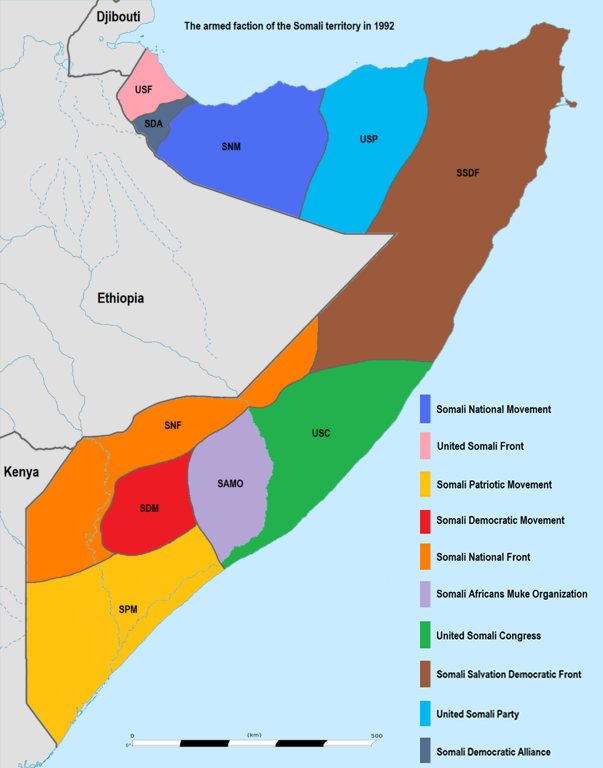As American economic power increased, so did the global political power of the United States. The Cold War against the Soviet Union ended in 1991 with the dissolution of that union into several weaker states. During the remainder of the 1990s, the U.S. was unquestionably the most powerful country in the world. President Clinton decided to use the country's unchallenged power to resolve some of the violent conflicts breaking out all over the world.
One of the conflicts that Clinton addressed during his first term was the Somali Civil War, a violent war for control of Somalia, a country on the east coast of Africa.
In 1991, Somalia's leaders were overthrown, and its army was disbanded. As a result, there was no central government in power, and several groups began fighting for control of the country. You can see in the map below that Somalia became divided into several smaller zones, each with its own factions and leaders:
![By original map : , South Sudan : Flappiefh (Own work) [GFDL (http://www.gnu.org/copyleft/fdl.html) or CC-BY-3.0 (http://creativecommons.org/licenses/by/3.0)], via Wikimedia Commons](https://s3.amazonaws.com/cms.accelerate-ed.com/image/2e55614e-a9db-463e-92ae-de177e1f4906.png) Somalia curves around the eastern tip of Africa. |
 (click to enlarge) |
The ordinary citizens of Somalia suffered the most. The fighting drove them from their homes, and troops hoarded food and supplies for themselves. Soon, images of suffering Somali citizens spread across international television stations and there was a global outcry for help. President George H.W. Bush negotiated with the United Nations to send peacekeeping troops and humanitarian supplies to the country. When Bill Clinton became president in 1993, he inherited responsibility for the United States' involvement in Somalia.
Choose the sentence that BEST describes the reasons for American intervention in Somalia.
You should review the content of this page again.
You should review the content of this page again.
Yes! It was the warring factions' hijacking of supplies sent to help suffering refugees that compelled the United States and other countries to act.
You got # out of # correct. Click the Retry button for another attempt.
You got a perfect score. Great job!
